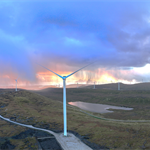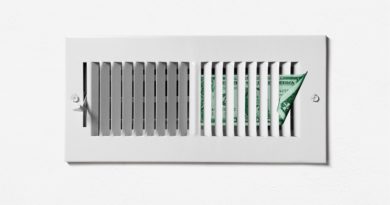[Blog] HVAC Industry Trends: 7 Things Every Contractor Should Know
Energy Disrupter

HVAC industry trends for 2019 and beyond reveal a number of challenges and opportunities for contractors in the space.
The past year has seen many developments in HVAC technology and the industry as a whole. For contractors, understanding these HVAC industry trends is key for maintaining competitiveness in the space.
Today, we’ll take a look at 7 of the most prominent trends for 2019 and beyond. First, let’s examine the state of the industry as a whole.
HVAC Industry Statistics for 2019
The following HVAC industry statistics pertain to the United States, as tabulated by IBISWorld and the U.S. Bureau of Labor Statistics.
Market Size/Revenue: $96.6 Billion
Industry Growth Rate in 2019: 0.4%
Median Pay: $47,610 per annum
HVAC Industry Outlook: 13% projected job growth for mechanics and installers through 2028; much faster than the average of 5% for other jobs in the United States
HVAC Industry Trends
#1. Transparency in Pricing
Online retailers (particularly Amazon) have conditioned consumers to expect upfront price declarations in all aspects of commerce. As a result, HVAC companies who rely on the increasingly outdated strategy of only disclosing price after a home visitation (read: long sales pitch) place themselves at a disadvantage.
Effective companies, however, display pricing information for their products and services prominently on their websites. Some have even taken to providing prospective clients quotes via apps.
#2. CRM Technology
Another one of the most prominent HVAC industry trends for 2019 involves the transition towards CRM (customer relationship management) software.
Slow-to-adapt HVAC companies still rely on filing cabinets with forms and pieces of paper to keep track of client data. This is incredibly inefficient and renders it impractical to adequately follow up with clients about maintenance appointments.
For 2019 and beyond, it’s imperative that companies looking to remain competitive adopt more efficient processes that automate customer relationship management.
#3. HCFC Refrigerant Discontinuation
The Environmental Protection Agency previously mandated that production and importation of HCFC must cease by January 1, 2020.
This will have a considerable impact on the HVAC industry outlook since virtually all air conditioners manufactured before 2010 use HCFC. Many of these units are still being used on residential and commercial properties today.
As existing HCFC supply wanes, HVAC technicians and companies will undoubtedly benefit from encouraging clients to either switch to more modern systems or retrofit their old ones. The latter solution will require additional training for technicians; proactive companies should prepare for this.
#4. Furnace Fan Efficiency Regulations
One of the HVAC industry trends for 2019 that we saw come to fruition this past year pertained to new standards for furnace fan efficiency. The standards, introduced by the Department of Energy in 2014, require drastically reduced wattage for furnace fans as of 2019.
HVAC technicians need to ensure their parts meet these standards. Once this is taken care of, companies have an opportunity to replace the substandard parts in countless systems across America.
#5. Increased Emphasis on Digital Marketing
Companies that don’t pay attention to this trend risk being left out of the tremendous HVAC industry growth projected for coming years.
Gone are the days when word-of-mouth was the primary way people learned about service companies in their area. Today, people head to Google for everything. This presents many opportunities and challenges for HVAC companies.
For one, companies need to develop SEO-friendly websites that will actually get them on the radar of potential clients.
Second, companies need to work on building a repertoire of positive reviews on platforms like Google My Business. No reviews (or worse, bad reviews) simply don’t cut it anymore.
#6. Residential Clients Driving HVAC Industry Growth
Research indicates that residential clients were major drivers of growth in the U.S. HVAC market during 2019. This trend will almost certainly continue beyond this year considering its roots; demand for retrofitting and renovation services will only increase as new regulations come into play.
#7. New HVAC Technology Developments to Watch
Revolutionary new methods are making their way to the U.S. HVAC market.
While conventional systems familiar to all industry professionals are unlikely to disappear anytime soon, it’s imperative that companies hoping to thrive for years to come familiarize themselves with technology such as:
- Smart HVAC
- DeVAP HVAC
- Geothermal HVAC
- Solar HVAC
Even if they aren’t tasked with installing these systems anytime soon, increased access to information means technicians will almost certainly get asked about them in the field. Being informed will help them communicate the weaknesses of these developing technologies in favor of systems they are better equipped to install.
Conclusion
Research indicates the U.S. HVAC industry is poised for growth in the coming decade. By keeping abreast of developments concerning the industry trends above, contractors will remain competitive and well-positioned to take part in that growth.
















